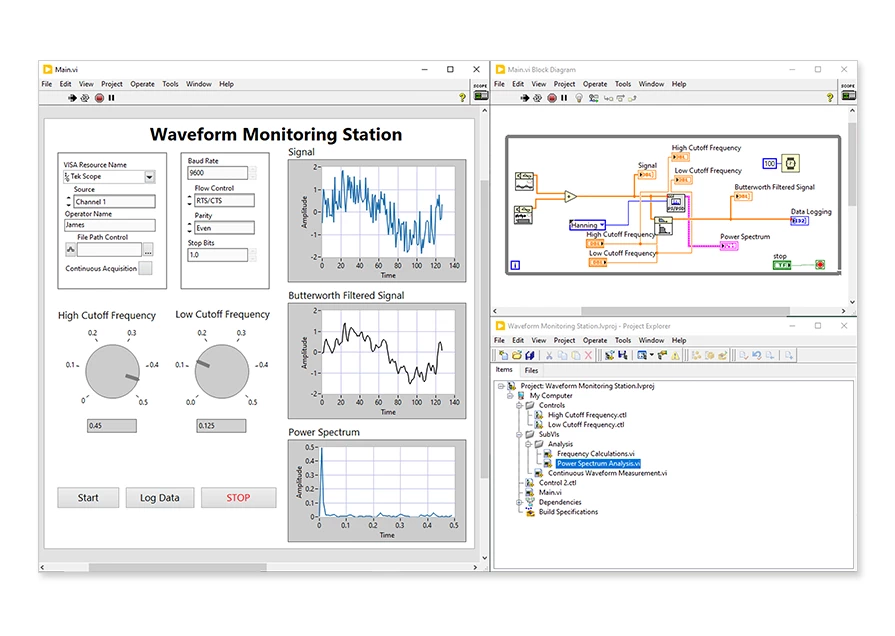About Course
Introduction
LabVIEW (Laboratory Virtual Instrument Engineering Workbench), developed by National Instruments (NI), is a widely adopted development environment used by engineers and scientists to design test, measurement, automation, and control systems.
Over the past 40 years, LabVIEW has continuously evolved—emphasizing graphical programming, seamless hardware integration, and broad applicability across engineering domains.
Engineers choose LabVIEW for its powerful features, including:
>> Seamless connectivity with instruments from any vendor
>>Native user interface capabilities for real-time monitoring and control
>> Built-in libraries with thousands of engineering analysis functions
>>Easy integration with popular programming languages such as Python, C, and .NET .
These capabilities make LabVIEW a leading platform in the Test, Measurement, and Automation industry.
Concepts of Data Acquisition (DAQ):
Data acquisition is the process of measuring electrical or physical phenomena—such as voltage, current, temperature, pressure, or sound—and converting them into digital data for analysis and monitoring.
A typical DAQ system includes:
>>Sensors to detect and convert physical signals
>>DAQ hardware to condition, digitize, and transmit the data
>>Software (such as LabVIEW) to visualize, analyze, and control the data in real time.
Together, these components enable engineers and researchers to monitor and automate processes with precision and flexibility.
Objective:
We have designed our Data Acquisition and LabVIEW training courses to help students build a strong foundation in handling real-world signals from various transducers and actuators. This is a project-based learning program that offers step-by-step guidance—from the basics to building industry-standard applications using LabVIEW and data acquisition systems.
Course Content
Labview programming Environment & its Fundamental Tools
-
Introduction to LabVIEW
05:23 -
Front Panel & Block Diagram
11:08 -
Debugging Tools in LABVIEW
07:46 -
Quiz
-
Assignment
Concept of Data Types & Data Structure in LabVIEW
Local & Global Variables
Programming Loops In LabVIEW & its uses
Data Flow Programming Model and parallelism
Data Visualization
Designing of User Interface in LabVIEW
File Handling and execution
SubVI concept and its uses
Application Builder
Concept of Signal Processing using LabVIEW
Implementation of Control system and design using LabVIEW
Hardware Integration with LabVIEW
Application of DAQ device to measure & control physical phenomenon
Earn a certificate
Add this certificate to your resume to demonstrate your skills & increase your chances of getting noticed.



